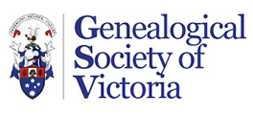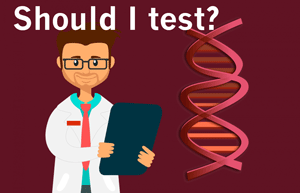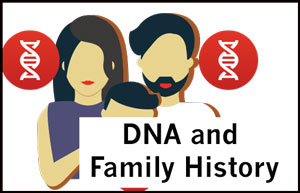DNA webcasts (GSV members login for access)
Enjoy our new presentations on genetic genealogy.
| A DNA test can help you extend your family tree, finds cousins and perhaps break through a brick wall in your research. What is involved in taking a test? Which test should you take? What company? Is it safe? This webcast will provide guidance on all these questions. | DNA tests result give you information on your ethnicity – but what does it mean? Why don’t the results match my genealogy? How do I interpret the ethnicity results and use them in my family history? These questions and more are discussed in this fascinating webcast. | DNA is a powerful tool to help with your family history. This short introductory webcast describes what the results of a DNA test consist of and how you can start to use them in your family history. It is an introduction to GSV’s series of genetic genealogy live ZOOM presentations. | ||
| Handout (pdf) | Handout (pdf) | Handout (pdf) |
Live Presentations on Zoom
During the year we present a series of live presentations on ZOOM covering a range of topics on genetic genealogy. These will be from beginner to more intermediate topics. The 90-minute sessions allow for for online questions and discussion. We hope this will make GSV’s presentations more available to members unable to travel and to regional members.
Check the GSV events calendar for sessions.
Introductory/beginner
Using DNA for family history
This introductory presentation gives you the essential DNA basics and explains how a DNA test can set you on your way to finding cousins, common ancestors and solving family history mysteries and more. It is relevant to any of the main DNA tests with Ancestry, My Heritage etc.
Understanding DNA Matches
DNA results list thousands of people who share DNA with you. These matches could be immediate family, or cousins, close and distant. This presentation explains how to read your results, using examples from Ancestry and My Heritage, and explains why DNA matches are so important for your family history.
Using DNA Matches
Your DNA matches are the key to using DNA in your family history. This presentation demonstrates the essential strategies to work out how you are connected to your DNA matches, to identify ancestors and extend your family tree. The focus is on Ancestry but the strategies are relevant no matter which company you have tested with.
Intermediate
Organising your matches
Learn how to get full value from your Ancestry DNA test result. Learn about linking your DNA to your tree, managing multiple tests, and changing DNA settings. Most importantly, learn how to search matches and how to colour code your matches to align with branches of your family tree.
ThruLines
Ancestry’s ThruLines feature provides you with another way to view your matches and potentially identify new ancestors. The presentation demonstrates how to use ThruLines, verify the suggestions and extend your family tree.
Chromosome browsers
Some DNA testing companies (not Ancestry) provide chromosome browsers to view your DNA matches. This presentation will explain chromosome browsers from several sites such as My Heritage and Family Tree DNA, and how can they help with understanding your DNA matches.
Finding more matches
A greater number of cousin matches increases the chance of solving family mysteries and extending your family tree. You can increase the number of your DNA matches by uploading your DNA data to other sites. Learn how to move your DNA to other sites, find more matches, and what to do with them.
Autoclusters
Learn how to group your matches into clusters likely to share common ancestors, or be on the same branch of your family tree. Clusters of matches give you additional information to work out how you are connected to matches. The webcast will also demonstrate the use of Genetic Affairs website to form autoclusters from various DNA testing sites.
DNA Painter (Part 1)
Learn about a fabulous free site to map the DNA you have inherited from your ancestors, and to use it to construct a genetic profile and genetic family tree.
Advanced
DNA Painter (Part 2)
DNA Painter, with a subscription, can import match segment data from various sites and even auto cluster data to help you identify matches, ancestral branches, and provide valuable clues to help you work out how you are connected to some of your mysterious matches – even if they have no family tree.
DNA Genetic Genealogy Study Group
Convener: Maureen Trotter. This new group is for intermediate to advanced genetic genealogy users. It is a self help group for people who are familiar with DNA terminology and available software tools, and who would like to work in a small study group where participants meet to continue to hone their skills in genetic genealogy. Participants will have completed the GSV DNA for beginners classes or have a similar knowledge base. The study group will meet on the first Tuesday of the month, 10.00am to 12.00pm. Maximum attendees of 14 per meeting.
DNA email - dna@gsv.org.au is available to support participants of the talks and study group.
DNA Consultations
At present the GSV does not offer DNA Consultations.



